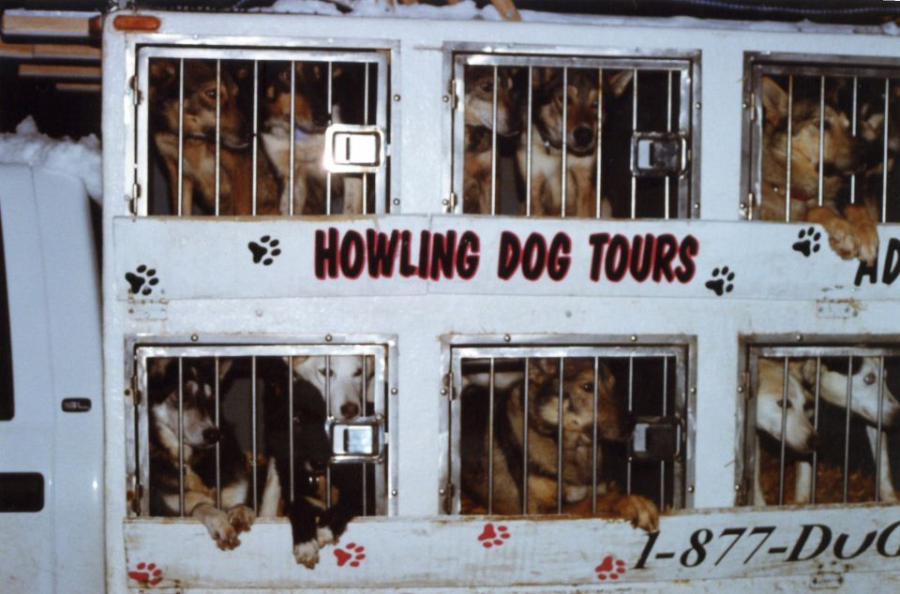Sled Dogs: The Gruesome Truth
December 10, 2019
Paws crunch the frozen snow of glacial alaska, pulling tourists through the snowy tundra. It’s a picturesque image, a team of dogs hauling a sled behind them.
Growing up with, movies like Balto and books like Stone Fox, Sled dog racing or tours are appealing, and interesting. Especially if you love dogs.
But as cool as it is, how does it affect the dogs behind the scenes, and in the off seasons?
Like many races, the Iditarod sled race, is a 9-12 day long race and is around 1,150 miles long. Stops are mandatory, but they are still kept in the -60 degree weather, snow, sleet and freezing winds, little to no protection from the violent climate.
Infection can appear quickly but sometimes undetected, or just ignored. Many dogs leave the race with wounded paws, from the frozen terrain. And without medical attention could result in the dog losing the paw, and or being shot, as it is no longer useful to the Musher.
These dogs are made to run over 100 miles a day, and sometimes, this can be fatal.
Records of dog deaths were not kept until 2004, but up until now, 27 deaths have been recorded.
In 2013 a dog named Dorado was buried under a snowdrift and died of asphyxiation. In 2015 a musher crashed and was run over by another sled led by a blind dog, forced to run, and in 2016 a dog named Nash was hit and killed by a snowmobile.
The Alaskan weather the dogs and mushers have to endure is romanticized by the Iditarod Trail Committee (ITC) to argue the race isn’t cruel to the dogs. Having a dog outside for 12 days in this weather warrants an animal cruelty conviction in the states, but in alaska this doesnt apply to mushing dogs.
The race rules state “cruel or inhumane treatment of the dogs.” and if the dog dies of this treatment the musher is disqualified, but if “The cause of death is due to a circumstance, nature of the trail, or force beyond the control of the musher. This recognizes the inherent risks of wilderness travel.” the musher can continue.
Now arguments of, these dogs are made for this climate, are in fact true, for the dogs who are. Like Huskies, Malamutes. They have dark fur around their eyes to protect them from the harsh sun rays that bounce off the snow, and a double coat to keep them warm.
But many other breeds are bred with these dogs, to make them faster, stronger, and able to run longer. Like the Greyhound.
This has bred a dog that has very little protection in the cold. But on occasion when a musher takes off his/her goggles and become snow blind, the dogs have been able to lead them to safety leading scientists to believe led dogs have built up immunity to the snow.
But when the dogs are not racing, most are kept chained up, and dogs who aren’t good at running, are treated like faulty machinery, some beaten, shot, or left to starve. The dogs who are bred, and don’t meet the proper standards are shot.
Of course there are people who treat their dogs, properly, and like pets, but sadly they aren’t in the spotlight. Instead the gruesome stories fill the media. In April 2010, over 100 dogs used to pull tourists, were brutally slaughtered by Robert Fawcett-the general manager of Whistler based Howling Dog Tours- because they were unwanted and looked at as useless. This touring company has gotten called out many times for being cruel to their dogs.
In 2000, they were accused of keeping 73 dogs in crates in the back of trucks used for transport as their permanent home, and only given water and food once a day, some dogs never even leaving the crate.












